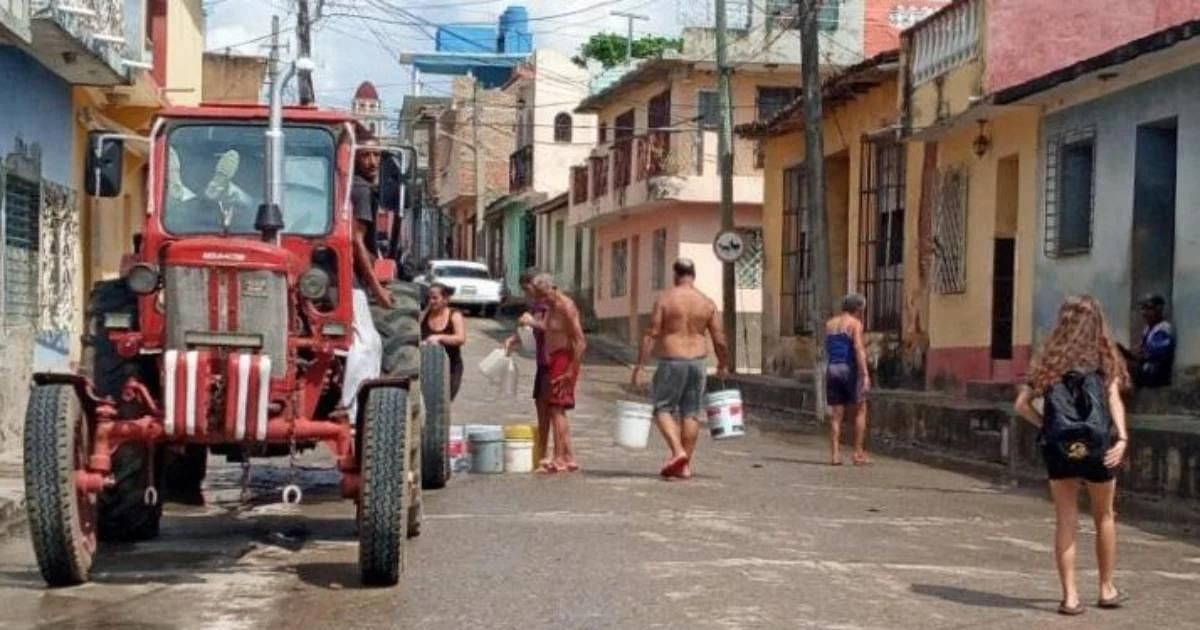
Around 700,000 people in Cuba do not receive water daily due to blackouts, as the hydraulic sector is the second largest consumer of electrical energy after the population demand, according to official sources.
Antonio Rodríguez Rodríguez, president of the National Institute of Hydraulic Resources (INRH), described the distribution of drinking water at present as "a very complex situation," pointing to the continuous power outages, which he referred to as "energy contingencies," as responsible, as reported by the official newspaper Granma.
Although the number of people who do not have daily water supply service due to power outages is alarming, only half of the Cuban population receives the precious liquid steadily, while the rest do not for various reasons, such as drought, lack of distribution network, leaks, corruption, among others.
Rodríguez described the lamentable situation of the generators in the supplying plants, indicating that recently there was only coverage for 36% of the supply sources in the territories: “we have reached 57%, but we hope to cover 65% with the introduction of other batteries soon,” he said without specifying a date.
The official admitted that the problem is exacerbated because the companies responsible for the maintenance and repair of the generators do not have spare parts, making it difficult to start up the equipment.
In addition, the supply of fuel to the generators also faces difficulties. The president of the INRH justified this by pointing out that "some of these groups are located in hard-to-reach places, and do not always receive diesel on time."
As a palliative measure, he pointed out that water is transported in tanker trucks, "which extends the cycles in those communities that do not receive the liquid through the pipes," highlighting the difficult situation faced by people affected by water supply.
As a possible solution, Rodríguez pointed out that currently the "installation of 722 units with solar power supply" is being carried out to reduce dependency on pumping from the national electricity grid.
In this regard, he said that there are more than 600 providing services and another 144 have just entered for mountainous municipalities: "I'm talking about 170 pumping stations that will install 70 solar-powered units in the eastern part of the country. Another 74 will be allocated to Villa Clara."
Finally, the official boasted that by next July they intend to have "866 functioning units, which are 866 locations where the supply will not be affected by power outages."
Last Monday, the pro-government newspaper Escambray reported that in the municipality of Yaguajay, in the province of Sancti Spiritus, photovoltaic systems are being installed in 10 drinking water pumping stations.
Yusniel Benavides Triana, director of the UEB Aqueduct and Sewerage in that municipality, pointed out that "almost all pumps in the area are hybrids, which operate with both solar and electric power."
He explained that "of the energy generated by the panels, a percentage is used and the rest is fed into the National Electric System," representing an 80 percent reduction in consumption.
Despite the benefits of technology, the manager said that there are still eight pumping stations without a photovoltaic system, out of the 18 that will be installed.
In addition, he emphasized that the ones in San José, in Iguará, La Dalia, Perea, Siboney, and Frente Norte de Las Villas, in Mayajigua, already have solar panels, however, they are not yet operational "due to lack of photovoltaic cables."
In other words, there are still five pumping stations that, although they could generate significant savings in energy consumption, continue to use exclusively the National Electric System (SEN) due to the lack of photovoltaic cables.
What do you think?
COMMENTFiled under: